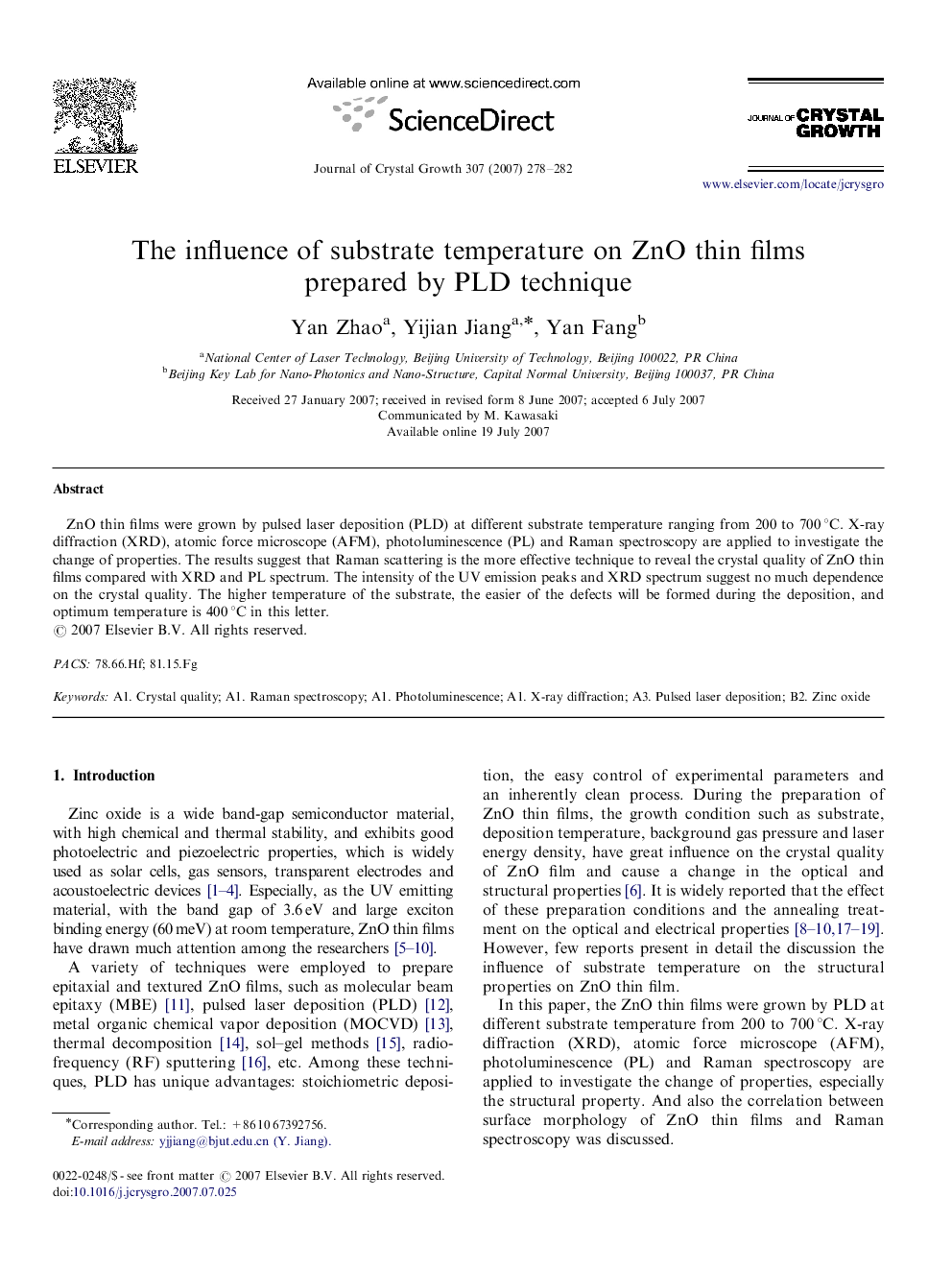| Article ID | Journal | Published Year | Pages | File Type |
|---|---|---|---|---|
| 1795135 | Journal of Crystal Growth | 2007 | 5 Pages |
Abstract
ZnO thin films were grown by pulsed laser deposition (PLD) at different substrate temperature ranging from 200 to 700 °C. X-ray diffraction (XRD), atomic force microscope (AFM), photoluminescence (PL) and Raman spectroscopy are applied to investigate the change of properties. The results suggest that Raman scattering is the more effective technique to reveal the crystal quality of ZnO thin films compared with XRD and PL spectrum. The intensity of the UV emission peaks and XRD spectrum suggest no much dependence on the crystal quality. The higher temperature of the substrate, the easier of the defects will be formed during the deposition, and optimum temperature is 400 °C in this letter.
Keywords
Related Topics
Physical Sciences and Engineering
Physics and Astronomy
Condensed Matter Physics
Authors
Yan Zhao, Yijian Jiang, Yan Fang,
